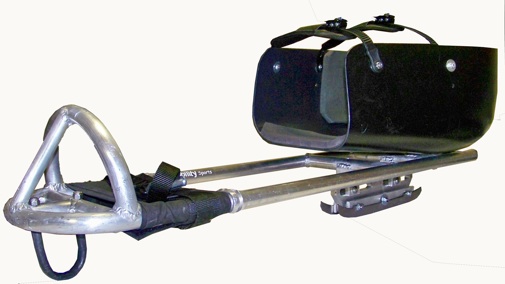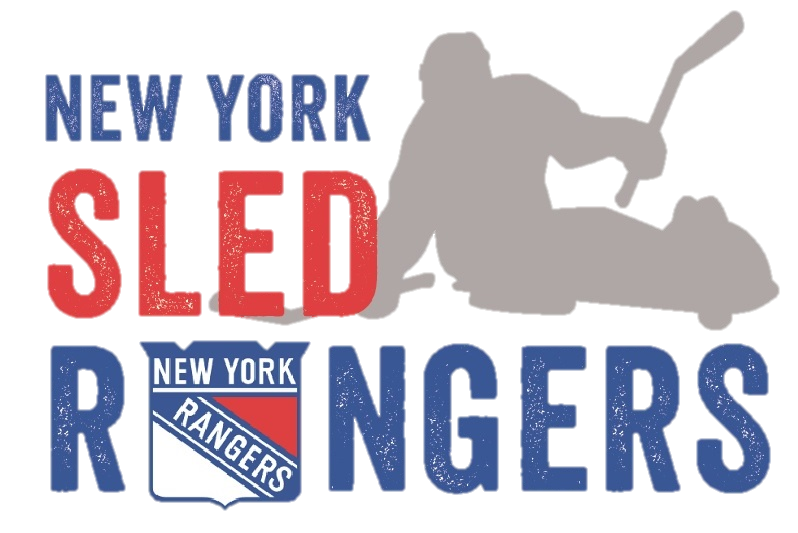About Sled Hockey
What is it?
Sled hockey is an exciting ice sport that allows individuals with disabilities to enjoy the great sport of hockey. It is very similar to “stand-up hockey” in terms of concept and rules. The main difference is that instead of standing up to skate, participants sit on their skates using an adaptive device known as a sled, which is affixed with two skate blades and a runner in the front to form a tripod. The other main difference is that in sled hockey, participants use two shortened hockey sticks with a blade on one end and a pick (similar to the end of a figure skate) on the other end, which enables them to propel themselves across the ice much like in cross country skiing. Hard checking, elevated puck shooting, and 60-mile an hour slap shots are as much a part of sled hockey as they are in “stand-up” hockey.
Who can play?
Anyone with a disability that would prevent them from participating in “stand-up hockey” is a candidate for sled hockey. It is a sport that allows players with mobility limitations (amputees, and able-bodied people with knee, leg or hip injuries) to play, and requires great upper-body strength, balance, and the ability to handle the puck. Even able-bodied individuals enjoy the sport of sled hockey, but are generally at a disadvantage due to the superior upper body strength of a wheelchair user. Typical athletes have spinal cord injuries, neurological disorders such as CP or spina bifidia, loss of one or both legs, or otherwise generically unable to or have difficulty walking.
History
Sled hockey, or sledge hockey, as it is referred to outside of the United States, originated in Sweden in 1940 and has been played in Europe since 1971. Canada soon followed the trend and boasts the largest program in the world. It was brought to the United States back in 1989 with the first national team at the time based in Minnesota. Today, there are many established programs, for both children and adults, in most areas throughout the United States.
Equipment
Players use the basically the same type of equipment as in “stand-up hockey” with a few exceptions. Players sit in specially designed sleds that sit on top of two hockey skate blades. Each player uses two shortened sticks, and the sticks have metal picks on the butt end to propel themselves across the ice. Movement is achieved by using the metal teeth as a means to grip the ice and push forward. Those players who are not able to push themselves have an additional push-bar attached to the rear of the sled, so that an able-bodied skater can push them from behind. Goalies wear basically the same equipment but do make modifications to the glove. Metal picks are sewn into the backside to allow the goalie to maneuver. In addition, the goalie sled uses plastic ‘blades’ instead of metal to allow the goalie to move laterally as well. At the Paralympic level, the equipment parameters – length of sticks, number of picks, height of sled – are strictly enforced.
Rinks
Only few rinks around the country are sled accessible, which require three main modifications. First, the bench areas should be flush with the ice with no step, so that sled players can remain in their sleds and skate on and off the ice during shift changes. Secondly, the surface area inside the bench areas should be made of plastic or ice to avoid damage to the sleds. Thirdly, the area that is usually plain white boards should be replaced with plexiglass so that players in the bench area can view the action. These modifications don’t cost much money, but they require forethought and planning.
Rules
All of the same ice hockey rules that have been implemented and enforced in regular ice hockey apply to sled hockey, though there are several additions. Of course, it’s not allowed to hit another player with the pick end of the stick, or to handle the puck with hands. The most important addition is the prohibition against “T-boning” or “Teeing”. Teeing is defined as a player making contact with an opponent with any part of the front radius of the sled into his opponent or from the side. A player to tee’s an opponent will be assessed a minor or major plus a game misconduct penalty. There are additional rules for the able-bodied skaters who help to push players who cant push themselves. Pushers can’t skate backwards, can’t screen, can’t advance the puck, can’t jump, and can’t skate faster than the average speed of players on the ice.
Today
Sled hockey provides opportunity for people with many types of disabilities and there are opportunities available in local areas for recreation and competition all the way to the U.S. National Sled Hockey Team which represents the United States in international competitions, including the Paralympics. Team USA has to date claimed three Paralympic Winter Games gold medals (2014, 2010, 2002) and three IPC World Championships (2015, 2012, 2009). Sled hockey is rapidly growing in the U.S. and players are usually "hooked" once they touch the ice for the first time.
USA Hockey Sled Hockey Rules
| |||||||


